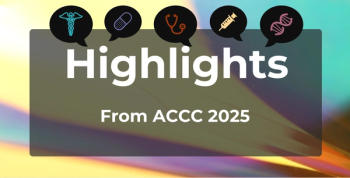
Dr Patrick Conway Explains the Proposed MSSP Changes
Patrick Conway, MD, MSc, deputy administrator for innovation and quality and chief medical officer at CMS, describes the proposed changes to the Medicare Shared Savings Program and how they will assist accountable care organizations transitioning to tracks with more risks.
Patrick Conway, MD, MSc, deputy administrator for innovation and quality and chief medical officer at CMS, describes the proposed changes to the Medicare Shared Savings Program and how they will assist accountable care organizations transitioning to tracks with more risks.
Transcript (slightly modified)
CMS recently announced proposed changes to the Medicare Shared Savings Program: What are the changes being implemented and why are they being made?
With the Medicare Shared Savings proposals, we had heard that the current structure of the financial arrangement meant you were always competing against your own baseline. And we had heard from providers and from others that this would be untenable in the long term because they may not be able to continually improve against their baseline, and that this might be viewed as penalizing lower-cost providers at baseline.
So what we proposed is to shift the model over time, that we still start with your own baseline but then we transition to regional benchmarks that really allow us to reward attainment of performance, to reward low-cost high-quality providers who attain that level of performance. We think it’s a much more sustainable financial model for the long term and we look forward to people’s comments on the model so we can finalize it most appropriately.
How do the proposed changes being made to the program benefit ACOs looking to transition to arrangements that have more risk?
We made changes to enable a shift to higher risk tracks. So for our shared savings tracks, risk track 2 and 3 have more 2-sided risks, and then we have next generation ACO as well. And we’re really trying to align the incentives and provide, for example, waivers to enter these tracks. Things like telehealth waivers so you can use telehealth appropriately, voluntary attributions so beneficiaries can say “This is my ACO,” and make a proactive choice; and they’re in the ACO’s population and you can deliver care services that way.
We also increased the shared savings rate for some of the higher risk tracks in order to make the financial model more attractive to providers.
Newsletter
Stay ahead of policy, cost, and value—subscribe to AJMC for expert insights at the intersection of clinical care and health economics.












































